Mercedes-Benz have unveiled the first details of the next generation engines at a Mercedes-Benz TecDay event. These engines, no matter how impressive they may sound, are not concepts, and will make debuts in production cars in 2017.
There’s love for both petrol and diesel engines from Mercedes-Benz, ranging from four-cylinder motors all the way to big V8s, although the latter does see some further shrinkage in terms of displacement. All engines are built around the 500cc per cylinder displacement concept so you have 2.0, 3.0 and 4.0 litre engines.
New M256 inline-six petrol engine
The rumours are true – Mercedes-Benz has abandoned the V6 in favour for the inline-6 configuration. But the inline-six layout isn’t all that’s new for the 3.0 litre M256 petrol engine.
The engine uses a 48V electrical system, which allows the entire ancillary system to be overhauled. For example, there is no longer any belt drive in front of the engine to power stuff like the water pump or aircond compressor – these are all electric items that are powered by the 48V system now, so they can be positioned elsewhere in the engine bay.
This results in shorter installation space requirements. Since the inline-six is narrower than V6, the ancillary systems are positioned on the left and right of the engine.
The engine is turbocharged but also has a 48V-powered electric auxiliary compressor (eZV, or electric turbo) to eliminate turbo lag. The starter motor has also been replaced with an Integrated Starter-Generator (ISG) installed in between the engine and the transmission that can provide a 15 kW boost to the engine.
Total output for the engine can go up to over 408 horsepower and over 500 Nm, while CO2 emissions have reduced by about 15 percent compared to the outgoing V6 engine.
The engine also includes a particulate filter in the exhaust system, which is something you usually see only on diesel engines. For petrol engine particulate filters, Mercedes-Benz is using cordierite, instead of silicon carbide which it uses for diesel particulate filters.
This engine will debut with the W222 S-Class facelift next year.
New OM656 inline-six diesel engine
Lovers of big diesel engines will be able to enjoy more power – the OM656 is now expected to do 313 horsepower up from 258 horsepower of the outgoing big diesel, while consumption is reduced by seven percent.
The OM656 uses stepped-bowl combustion, two-stage exhaust turbocharging, and a new feature for Mercedes-Benz diesel engines – CAMTRONIC variable valve timing.
New M176 V8 bi-turbo petrol engine
As expected, Mercedes-Benz’s non-AMG V8 is now 4.0 litres, following the direction set by AMG’s new V8 engine. From its 3,982cc displacement, peak horsepower is 476 hp (up from 455 hp) with peak torque of 700 Nm kicking in from 2,000 rpm.
The closed deck V8 has cylinder deactivation, which allows it to run on four cylinders during light loads and engine speeds of up to 3,250 rpm via the CAMTRONIC variable valve timing system. It uses a particulate filter as well.
This new engine will debut in the W222 S-Class facelift.
New M264 four-cylinder petrol engine
Most Malaysians will be buying 200 and 250 badged Mercedes-Benz cars, so this should be the most interesting bit to read about. Like the M256 six-pot, the new four-cylinder engine gets a 48V system. The turbochargers are now twin-scroll turbos, and there’s a particulate filter in the exhaust system.
However, instead of an ISG sandwiched in the gearbox, the M264 uses a belt-driven 48V starter-alternator (BSA) mounted where the conventional alternator usually sits. Mercedes-Benz says the BSA will allow improvements to the engine’s auto idle stop/start operation, electric boost at engine speeds of up to 2,500 rpm, energy recovery up to 12.5 kW and coasting with the engine turned off.
- Mercedes-Benz S-Klasse als Erprobungsträger für den neuen Reihensechszylinder-Ottomotor M 256 ; Mercedes-Benz S-Class is the prototype vehicle for the new 6cylinder inline gasoline engine M 256;
- Bei der Konzeption des Antriebsintegrationszentrums (AIZ) wurde auf Energierückgewinnung großen Wert gelegt: 98 Prozent der elektrischen Bremsenergie der Prüfstände wird ins Stromnetz zurückgespeist. ; The design of the Powertrain Integration Centre (AIZ) attached great importance to energy recovery, with 98 percent of the electric braking energy of the test rigs being fed back into the power supply.;
- Mercedes-Benz S-Klasse als Erprobungsträger für den neuen Reihensechszylinder-Ottomotor M 256 ; Mercedes-Benz S-Class is the prototype vehicle for the new 6cylinder inline gasoline engine M 256;
- Auf den insgesamt zehn Fahrzeugprüfständen findet unter anderem die Feinabstimmung von Motor und Getriebe statt – entsprechend umfangreich werden die Fahrzeuge vor den Messungen verkabelt. ; The total of ten vehicle test rigs are used to perform such work as the fine tuning of engine and transmission, this involving extensive wiring-up of the vehicles in advance of the tests.;
- Mercedes-Benz S-Klasse als Erprobungsträger für den neuen Reihensechszylinder-Ottomotor M 256 ; Mercedes-Benz S-Class is the prototype vehicle for the new 6cylinder inline gasoline engine M 256;
- Der Automatisierungsgrad der Prüfstände ist hoch: Die Fahrzeuge werden elektronisch angesteuert, beschleunigen und verzögern wie von Geisterhand oder wechseln die Gangstufen des Getriebes. ; The test rigs are highly automated: the vehicles are electronically controlled, accelerated and decelerated as if by magic or shift through the gears.;
- Mercedes-Benz S-Klasse als Erprobungsträger für den neuen Reihensechszylinder-Ottomotor M 256 ; Mercedes-Benz S-Class is the prototype vehicle for the new 6cylinder inline gasoline engine M 256;
- Auf den insgesamt zehn Fahrzeugprüfständen findet unter anderem die Feinabstimmung von Motor und Getriebe statt – Komfort, Dynamik und Agilität werden aufeinander abgestimmt. ; The total of ten vehicle test rigs are used to perform such work as the fine tuning of engine and transmission, this involving extensive wiring-up of the vehicles in advance of the tests.;
- Erprobung des neuen Reihensechszylinder-Ottomotor M 256 ; Testing of the new 6cylinder inline gasoline engine M 256;
- Auf den insgesamt zehn Fahrzeugprüfständen findet unter anderem die Feinabstimmung von Motor und Getriebe statt – entsprechend umfangreich werden die Fahrzeuge vor den Messungen verkabelt. ; The total of ten vehicle test rigs are used to perform such work as the fine tuning of engine and transmission, this involving extensive wiring-up of the vehicles in advance of the tests.;
- Erprobung des neuen Reihensechszylinder-Ottomotor M 256 auf dem Prüfstand ; Testing of the new 6cylinder inline gasoline engine M 256 on the test bench;
- Die Feinabstimmung von Antriebstrangkomponenten ist eine typische Aufgabe, die die Fahrzeugentwickler von Mercedes-Benz seit diesem Sommer im neuen Antriebsintegrationszentrum (AIZ) erfüllen. ; The fine tuning of powertrain components is one of the typical tasks that vehicle developers at Mercedes-Benz have been carrying out at the new Powertrain Integration Centre (AIZ) since the summer of 2016.;
- Auf den insgesamt zehn Fahrzeugprüfständen findet unter anderem die Feinabstimmung von Motor und Getriebe statt – Komfort, Dynamik und Agilität werden aufeinander abgestimmt. ; The total of ten vehicle test rigs are used to perform such work as the fine tuning of engine and transmission, this involving extensive wiring-up of the vehicles in advance of the tests.;
- Erprobung des neuen Reihensechszylinder-Ottomotor M 256 ; Testing of the new 6cylinder inline gasoline engine M 256;
- Für die Kühlung der Fahrzeugkomponenten sorgt ein Fahrtwindgebläse (vorne links), aus dem die Luft mit bis zu 180 km/h strömt. Damit sind hochdynamische Fahrmanöver möglich. ; The vehicle components are cooled by a ram air fan (front left) with an airflow of up to 180 km/h. This makes highly dynamic driving manoeuvres possible.;
- Erprobung des neuen Reihensechszylinder-Ottomotor M 256 ; Testing of the new 6cylinder inline gasoline engine M 256;
- Mit dem neuen Antriebsintegrationszentrum (AIZ) hat Mercedes-Benz im Sommer 2016 in Sindelfingen eine der modernsten Prüfstandseinrichtungen der Automobilindustrie in Betrieb genommen. ; With its new Powertrain Integration Centre (AIZ), Mercedes-Benz opened one of the automotive industry’s most advanced testing facilities in summer 2016 in Sindelfingen.;
- Erprobung des neuen Reihensechszylinder-Ottomotor M 256 auf dem Prüfstand ; Testing of the new 6cylinder inline gasoline engine M 256 on the test bench;
- Gerade auch wegen der Entwicklung alternativer Antriebe hat der Bedarf an Erprobung auf Prüfständen zugenommen. Das Antriebsintegrationszentrum (AIZ) bietet reproduzierbare Prüfbedingungen. ; Especially the development of alternative drive systems has increased the demand for testing on chassis dynamometers. The Powertrain Integration Centre (AIZ) offers reproducible test conditions.;
- Erprobung des neuen Reihensechszylinder-Ottomotor M 256 auf dem Prüfstand ; Testing of the new 6cylinder inline gasoline engine M 256;
- Auf den insgesamt zehn Fahrzeugprüfständen findet unter anderem die Feinabstimmung von Motor und Getriebe statt – Komfort, Dynamik und Agilität werden aufeinander abgestimmt. ; The total of ten vehicle test rigs are used to perform such work as the fine tuning of engine and transmission, with comfort, dynamics and agility being matched to each other.;
- Auf diesem hochmodernen Fahrzeug-Antriebsstrangprüfstand fährt das Fahrzeug nicht wie üblich auf einer Rolle, sondern ist an jedem Rad mit Hilfe spezieller Radnaben über eine präzise Drehmomentmesstechnik direkt mit einer Hochleistungs-Asynchronmaschine verbunden. ; On this state-of-the-art vehicle powertrain test rig, the vehicle does not run on a conventional roller, but is directly connected to a high-power asynchronous machine by means of a special wheel hub on each wheel with the use of a high-precision torque-measuring system.;
- Mercedes-Benz Sechszylinder-Benzinmotor M256 ; Mercedes-Benz six-cylinder engine M256. Engine cross section;
- Auf den insgesamt zehn Fahrzeugprüfständen findet unter anderem die Feinabstimmung von Motor und Getriebe statt – entsprechend umfangreich werden die Fahrzeuge vor den Messungen verkabelt. ; The total of ten vehicle test rigs are used to perform such work as the fine tuning of engine and transmission, this involving extensive wiring-up of the vehicles in advance of the tests.;
- Die moderne Automatisierungstechnik mit automatischer Testablaufsteuerung und -überwachung ermöglicht einen Betrieb des Antriebsintegrationszentrums (AIZ) rund um die Uhr ; Advanced automation technology with automatic test sequence control and monitoring allows round-the-clock operation of the Powertrain Integration Centre (AIZ);
- Erprobung des neuen Reihensechszylinder-Ottomotor M 256 ; Testing of the new 6cylinder inline gasoline engine M 256;
- Mercedes-Benz S-Klasse als Erprobungsträger für den neuen Reihensechszylinder-Ottomotor M 256 ; Mercedes-Benz S-Class is the prototype vehicle for the new 6cylinder inline gasoline engine M 256;
- Da die Ingenieure und Techniker nicht mehr im Auto, sondern außen am Bedienplatz sitzen, können sie Messungen mit neu entwickelten Tools parallel auswerten. ; As the engineers and technicians are not in the car, but outside at the control console, they are able to simultaneously evaluate the measurements using newly developed tools.;
- Die Vorbereitung der Fahrzeuge für die Prüfstandsfahrten ist umfangreich und wird unter anderem durch das automatische Parklagersystem und das Hochregal für Reifen erleichtert. ; The vehicles require extensive preparation for operation on the test rigs, this being facilitated by, among other things, the automatic parking storage system and the high-bay tyre warehouse.;
- Das Antriebsintegrationszentrum (AIZ) bietet Werkstattplätze zur Vorbereitung der Testfahrzeuge sowie 16 Kältekammerplätze zur Vorkühlung der Fahrzeuge vor Klimakammertests. ; The Powertrain Integration Centre (AIZ) includes a workshop for preparing the test vehicles as well as 16 cold chamber places for pre-cooling the vehicles prior to testing in the climatic chamber.;
- Zu den Highlights des neuen Antriebsintegrationszentrums (AIZ) zählen Prüfstände mit hochpräziser Drehmomentmessung direkt an den Rädern des Fahrzeugs (Bild) sowie ein Prüfstand mit Klimahöhenkammer. ; The highlights of the new Powertrain Integration Centre (AIZ) include chassis dynamometers with high-precision torque measurement directly at the wheels of the vehicle (photo) as well as a test rig with climatic altitude chamber.;
- Auf dem hochmodernen Fahrzeug-Antriebsstrangprüfstand ist das Auto mit Hilfe spezieller Radnaben direkt mit einer Hochleistungs-Asynchronmaschine verbunden. Diese simuliert die Fahrwiderstände und kann straßennahe Bedingungen darstellen. ; On the state-of-the-art vehicle powertrain test rig, the car is directly connected to a high-power asynchronous machine by means of special wheel hubs. The machine simulates the driving resistances and is capable of reproducing realistic road conditions.;
- Der Automatisierungsgrad der Prüfstände ist hoch: Die Fahrzeuge werden elektronisch angesteuert, beschleunigen und verzögern wie von Geisterhand oder wechseln die Gangstufen des Getriebes. ; The test rigs are highly automated: the vehicles are electronically controlled, accelerated and decelerated as if by magic or shift through the gears.;
- Mercedes-Benz S-Klasse als Erprobungsträger für den neuen Reihensechszylinder-Ottomotor M 256 ; Mercedes-Benz S-Class is the prototype vehicle for the new 6cylinder inline gasoline engine M 256;
- Mercedes-Benz Vierzylinder-Dieselmotor OM654 ; Mercedes-Benz four-cylinder diesel engine OM654;
Looking to sell your car? Sell it with Carro.

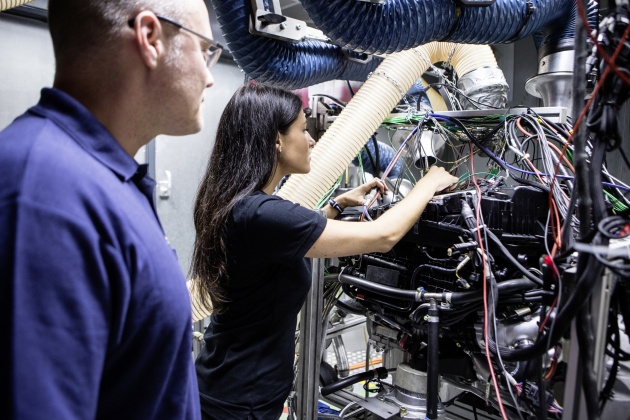
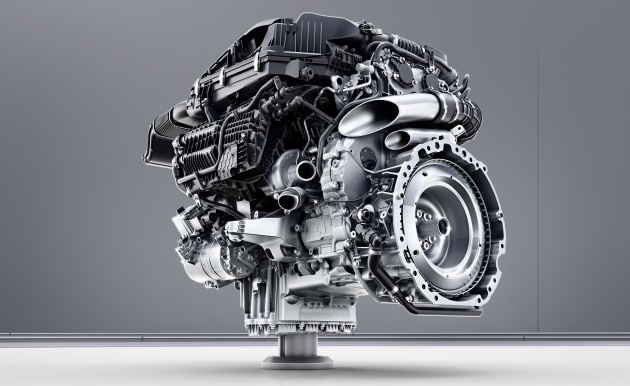
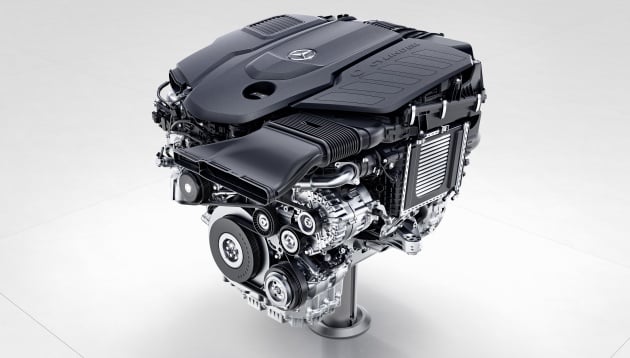
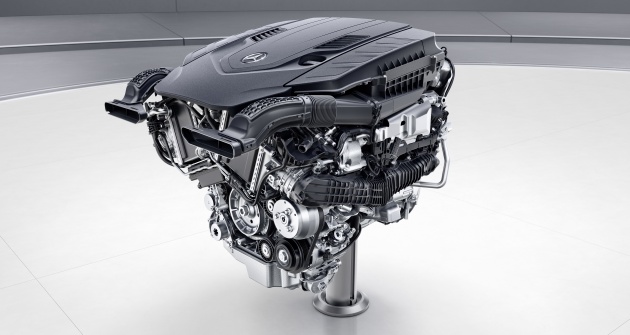
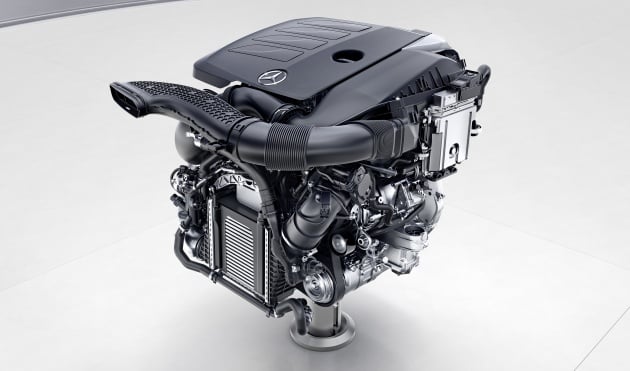

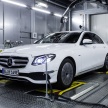
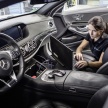
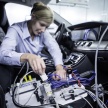



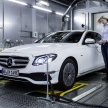
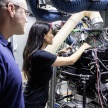
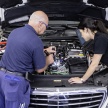
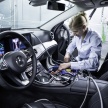
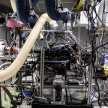
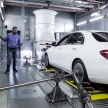
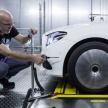

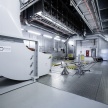


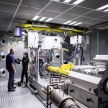
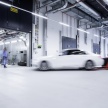
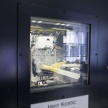
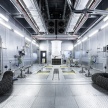
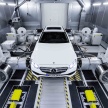
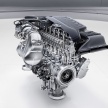
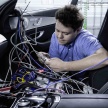
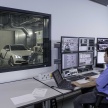

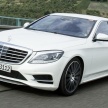
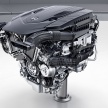
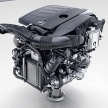

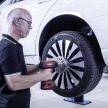
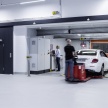
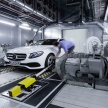


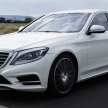
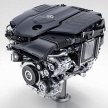
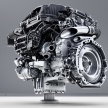
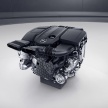



















































Bravo Benz ! State of the art.
that inline 6 in the new e class coupe would be awesome
inline six rules!!!
Wow, the V8 can deactivate from 8 to 4 cylinders when the ‘loads’ is low. This was first found in the S-600 V-12 engine. That is like having 2 V-4 engine but only use 1 when the load is light. Bravo to Merc. Now that’s what i call improvement.
Lets see the local mechanics tackle 48v systems
noob question, would the in car accessories (12v) still be compatible?
Assuming you are talking about modifying the car by putting amplifiers and subwoofer or extra LED headlights, Monitors and etc.. the answer is no, 48V to 12V will cause the 12V component to overheat and possibly catch fire. Voltage doesn’t fluctuate but Wattage does. The only way around it is a add a voltage regulator so that the 48V can be converted into 12V.
Now I assume your are talking about plugging it into the existing 12V receptacle, the yes there are pre-build regulators so you can charge you phone or devices on it.
in the 1980s, BMW and mercedez benz were using either a stright 4 or straight six engines and never a V configuration.
the reason for that – shorter crankshaft means lower torque at the same rpm with straight 6 and therefore reduced driveability (anyone remembers perdana V6 and its 4 cylinder siblings earlier? PV6 need tu be pushed harder and affects FC)
mercedez went the V6 way in the mid 90s but added a supercharger to improve torque but BMW maintained loyal with straight sixes (now though almost all are 4 cylinder turbocharged)
so welcome back Mercedez to the V-sixers!!
This is quite disappointing. There was a lot of hoo-hah in August about Diamler Benz entering the electric vehicle market to challenge Tesla and there was a lot of enthusiasm about having a large carmaker enter the market as it means a speed-up in the growth of electric charging infrastructure.
Now it’s October and we see Diamler Benz back to talking about petrol and diesel. Mercedes Benz used to be “the future of the automobile” but until today we have not seen or heard of a viable mass-market all-electric drivetrain from Diamler Benz.
Germany’s Bundesrat (federal parliament) voted to ban internal combustion engines by 2030, so it’s very disappointing to see that there’s no large-scale move to full electrification of all land vehicles.
I don’t understand what the problem is, it’s definitely not a technology problem. Tesla has released all of their patents for electric cars for public use meaning any car company no longer needs to spend money on redoing the research, they can just take Tesla’s patents for FREE and build pure-electric cars. Why is this not happening? Why is Proton wasting time with partners after partners to “research” on electric cars when the patents of the world’s best electric car have been made available for totally free??